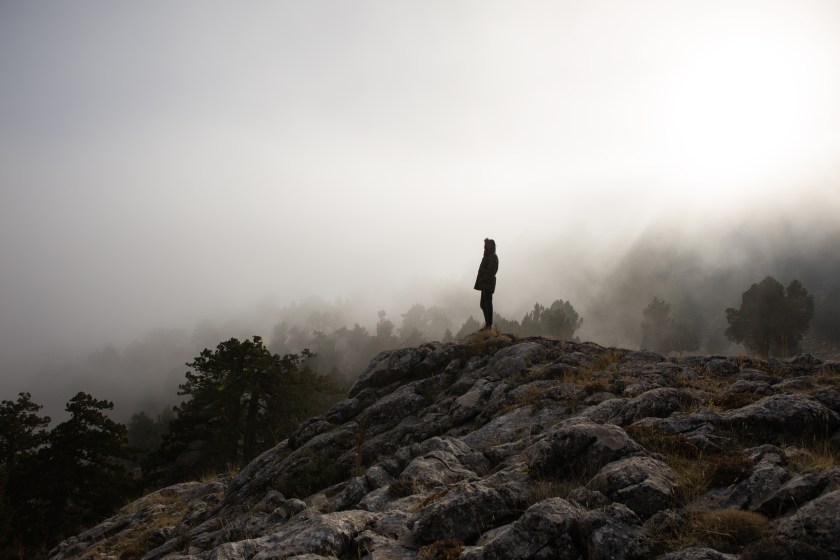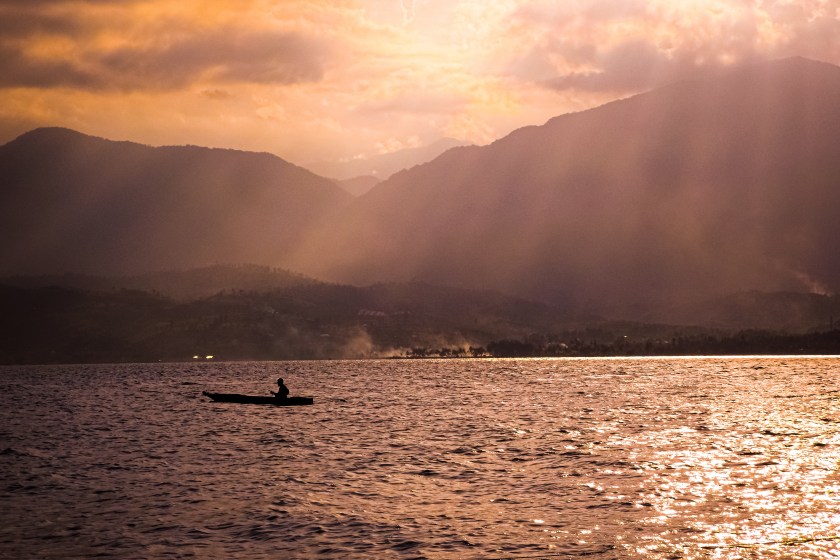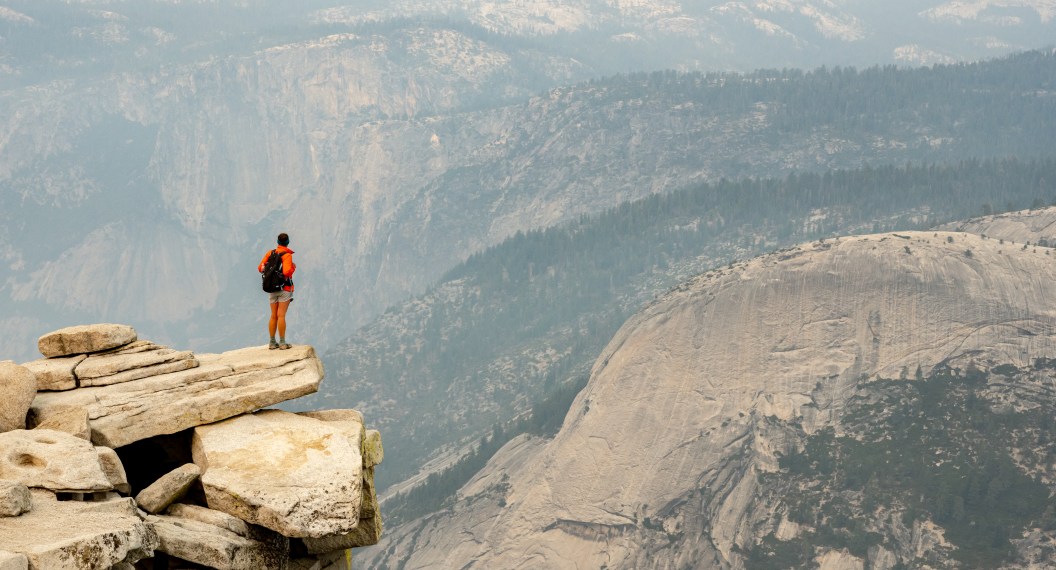Summer is the absolute best time for outdoor adventures, but for many across the United States, summertime also means wildfire season.
We're already seeing crazy fires in summer 2023, including over 10 million acres in Canada up in flames along with over 60,000 acres burning in New Mexico. Fires that massive are terrifying for locals, but what's more, the smoke creates air quality concerns. The Canadian wildfires had wreaked havoc on the air quality along America's East Coast, and they continue to contaminate it across the Great Lakes, Ohio Valley, mid-Atlantic and Northeast regions of the country. Cities such as Chicago, Minneapolis, Detroit, and New York did or continue to record some of the worst air pollution levels of any major city in the world.
The real kicker is that wildfires have become the new normal: In 2022, the U.S. had around 69,000 wildfires across the nation, and that number has been pretty consistent over the past few years as well.
Air quality is the main issue for those outside active fire zones. Breathing in air contaminated with nasty wildfire pollutants—particularly when you're outside, say, on a hike, fishing, or camping—can create or worsen very serious respiratory and heart problems.
Here's how to stay healthy and safe during wildfire season.
What Qualifies As 'Bad' Air Quality?
If you're itching to be outdoors—particularly to exercise, get some fresh air, or engage in other outdoor activities—health experts say you should check your local air quality index (AQI) levels, especially if wildfire smoke is in your area. (However, you can also check your AQI levels whenever you go outside as a standard practice, according to the National Weather Service.)
While it sounds complex, the AQI is simply a measurement that tells you what the current air quality is like in your neck of the woods. Here's a quick rundown on how it works:
The AQI scale ranges from 0 to 500. Each level on the scale indicates a specific set of health risks for certain groups of people.
For example, 0 to 50 means the air quality is good and air pollution poses little to no risk. The air pollution in this range won't cause you any trouble. On the other hand, when the AQI is up to 200 and higher, that means the risk of health effects such as coughing, wheezing, and shortness of breath goes up for everyone.
And AQI values that get up to 300 or higher are considered hazardous, meaning the entire population is even more likely to be affected by serious health effects. (To put this in perspective, New York City's AQI reached 405 out of 500 on June 8.)
How Bad Is It Really to Be Outdoors in Smokey Air?

Getty Images, mahiruysal
Most experts agree you should steer clear of strenuous activities that make you breathe fast or deeply when air quality is poor; taking those steps can help reduce how much smoke you inhale.
Dr. Norman Edelman, a pulmonologist and professor of internal medicine and core member of the Program in Public Health at Stony Brook University, tells Wide Open Spaces that the red flag is when the air quality starts climbing above 100, especially due to wildfire smoke. Here, being outdoors for any activity—such as running, biking, or hiking—can pose some real health risks.
"If you get several days of really bad air pollution, there'll be an increase of people going to the emergency room because of chest pain or heart attacks," Edelman says.
That's because wildfire smoke is packed with all sorts of nasty pollutants such as fine particulate matter and harmful gases. Exposure to these pollutants, particularly when inhaled for long periods, can aggravate the respiratory system and lead to a range of health problems including eye irritation, worsening asthma, and even heart failure, he adds.
And even those considered to be healthy can experience a decline in lung function due to continued exposure to bad air. "That's especially true for children or teenagers whose lungs have not yet fully developed," Edelman said.
For example, if your area's AQI goes over 100 and you decide to go for a hike to your favorite fishing spot, you may experience short-term health risks such as coughing, phlegm, trouble breathing normally, wheezing, shortness of breath, irritated eyes, nose and throat, headaches, asthma attacks, or tiredness.
And for those who have to be outside for work, several days or weeks of exposure to wildfire smoke can lead to more serious health risks, namely respiratory and cardiovascular problems including bronchitis, reduced lung function, heart attack, or even stroke, said Dr. Jimmy Johannes, a pulmonologist and critical care specialist at MemorialCare Long Beach Medical Center in Long Beach, California.
How to Stay Healthy with Smoky Air Outdoors

Getty Images, Alvani Novianra
We want to reiterate: When wildfire smoke is in your air, minimize the time you're outdoors. Catching fish, hiking a mountain, or even just enjoying a glass of lemonade while you bird-watch in the backyard is all not worth upping your risk for very serious, long-term health problems.
With that being said, here are some things that you and your family can do to minimize exposure to poor air quality and reduce health risks when you find yourself in not-so-great air conditions.
1. Check the Forecast and Cancel Adventures when AQI is 300+
When wildfires or wildfire smoke comes in your area, it's important to stay up to date on smoke forecasts along with air quality reports, Johannes says. Paying attention to public health messages and warnings can help you make informed decisions about whether that camping trip or hike should be rescheduled, for instance.
As a general rule, if the U.S. AQI indicates your area has poor air quality—meaning the air quality index exceeds 300—experts say you should avoid doing any lengthy or intense physical activities and stay indoors. That means you may want to swap an outdoor jog or bike ride for reading a book or researching your next trip for when air quality improves.
2. Wear a Mask When You Can Outside
If you need to be outside, you should wear a mask whenever possible, particularly one with a high-filtration capacity such as an N95 mask, Edelman says. Wearing a mask can help filter out a large portion of smoke particles and protect your respiratory system. Masks also act as a physical barrier that can help minimize health risks during smoky conditions, particularly for people who are more vulnerable to the effects of smoke or those who have to be outside most of the day, such as manual workers or outdoor guides.
3. Optimize Your Indoor Air Quality
We get it—you can't stop living your life as smoke blows in for weeks at a time. That's why it's important to keep your air indoors as clean as possible so that what you are exposed to overall stays as low as possible. Do this by:
- Keeping windows and doors closed as much as possible. Maintaining a physical barrier will prevent outdoor wildfire smoke from coming in to your living spaces and reduce the concentration of smoke particles. Since smoke can seep into your home through small exposed gaps or cracks, experts recommend insulating or sealing off any windows or doors if you can.
- Run a HEPA air purifier or filter. Air cleaner machines are designed to reduce unpleasant odors and capture pollutants in the air, which allows for cleaner air to circulate through your home. You want an air purifier with a high-efficiency particulate air (HEPA) filter to help reduce the concentration of any wildfire smoke or toxic particles that are inside your home, improving overall air quality.
- Minimize adding more air pollution indoors. Avoiding burning any candles, incense or cigarettes inside or using a fireplace—all of which can release particles and gases into the air and contribute to indoor air pollution, Johannes explains. Interestingly, the Centers for Disease Control and Prevention even recommends avoiding vacuuming, especially if you don't have a vacuum cleaner with a HEPA filter. Using one may recirculate fine particles such as dust back into the air, contributing to indoor air pollution.
4. To Be Honest: Stay Indoors As Much As Possible
One of the best ways to prevent breathing in harmful particles from wildfire smoke is to stay indoors whenever possible, Johannes says. By staying inside, you can reduce your direct exposure to things such as toxic gases and pollutants that may cause respiratory irritation or inflammation.
What's more, indoor environments typically can be controlled and managed using air purifiers, filters, and air conditioning units.If you are itching to leave your home, Johannes recommends finding other indoor places to spend your time at that typically have good air ventilation. Public places such as libraries, community centers, and shopping malls (use it as an excuse to stock up on new gear for your next trip!) often have large air filtration systems and generally good indoor air quality, which can help reduce the concentration of smoke particles. In addition, malls and gyms could be good and safe alternatives for people who are looking to get in some exercise during smoky conditions. It could be the perfect time to hit that rock climbing gym or take the rowing class you've been wanting to try!
READ MORE: Campfire Safety During the Dry Season and Beyond: Why It's So Important




